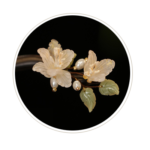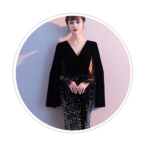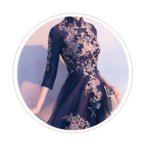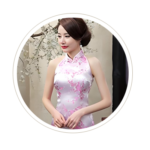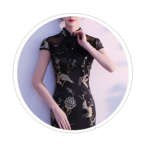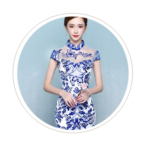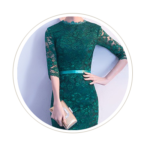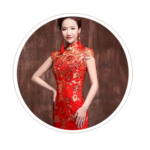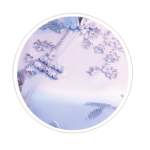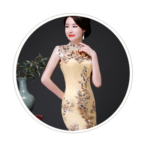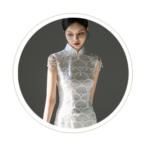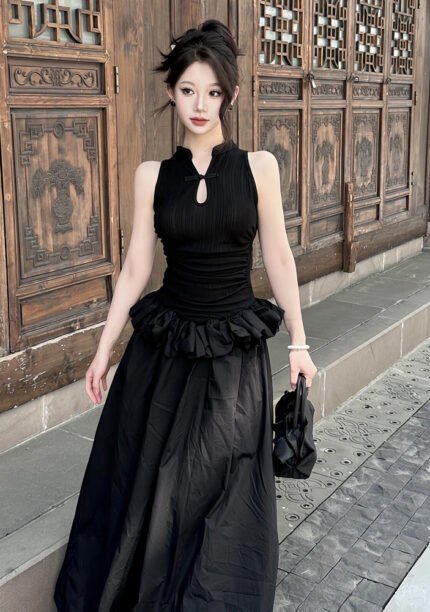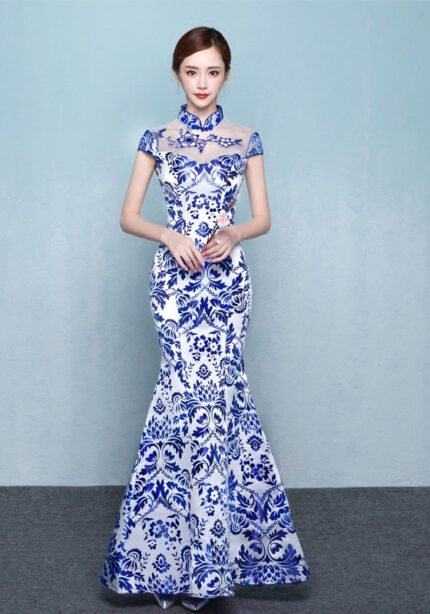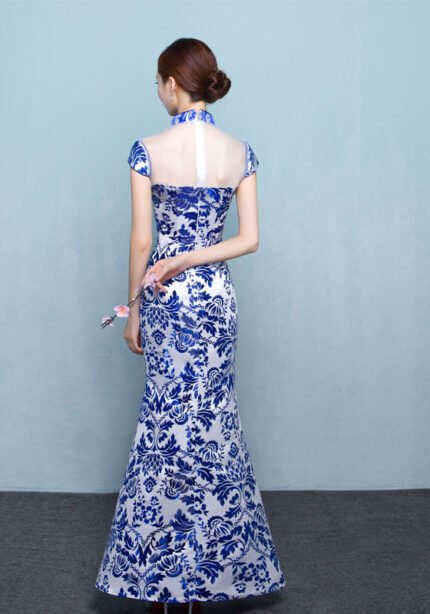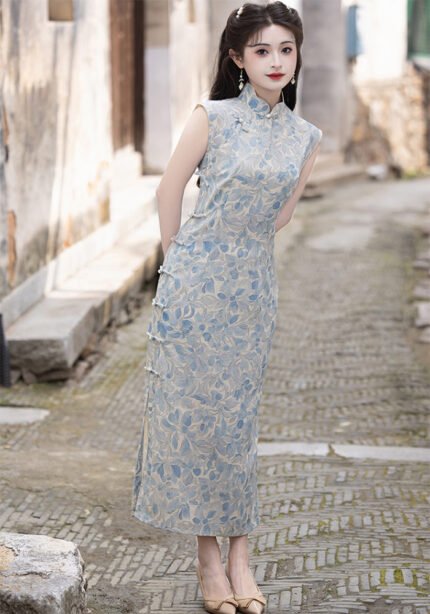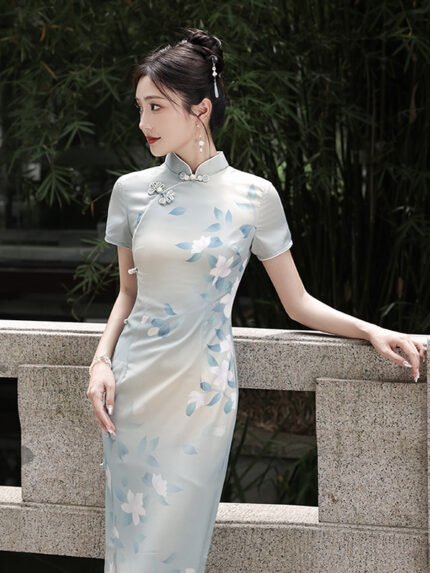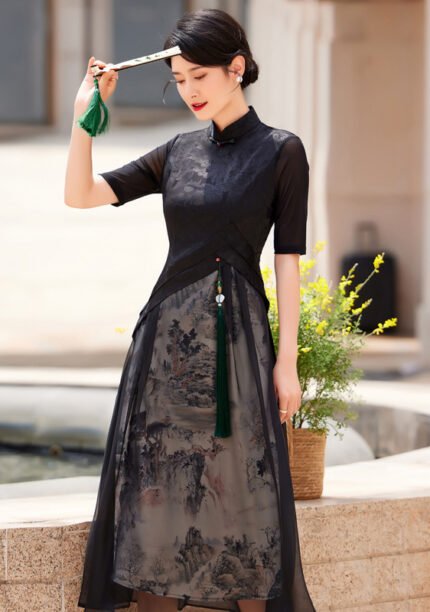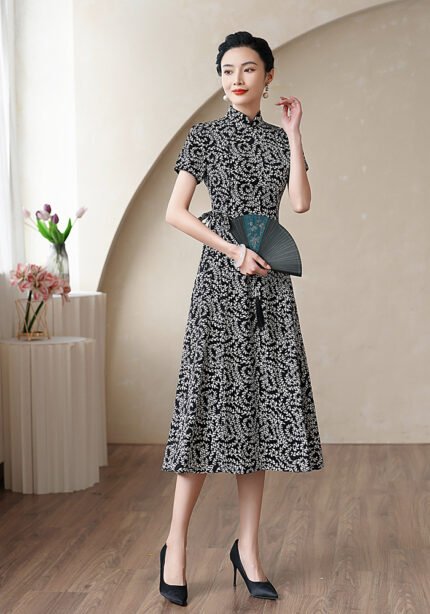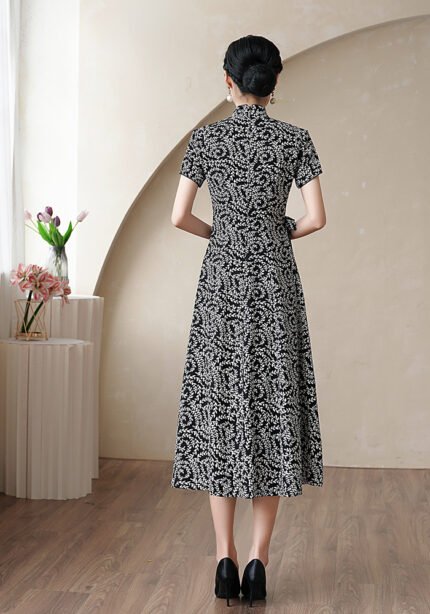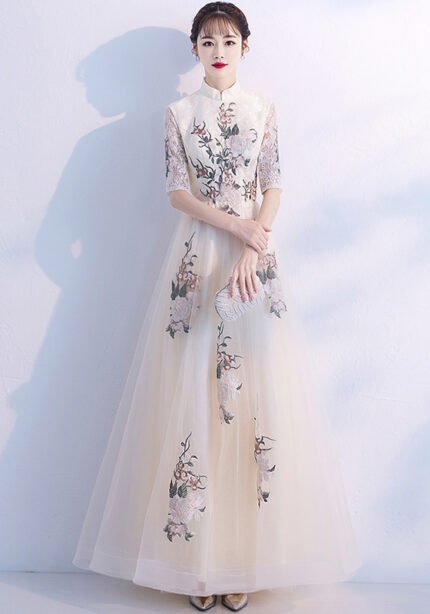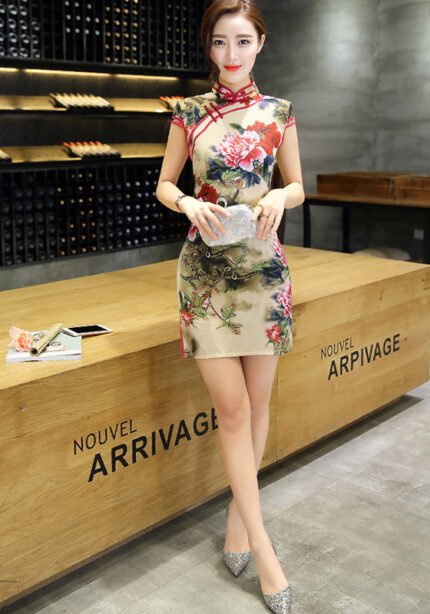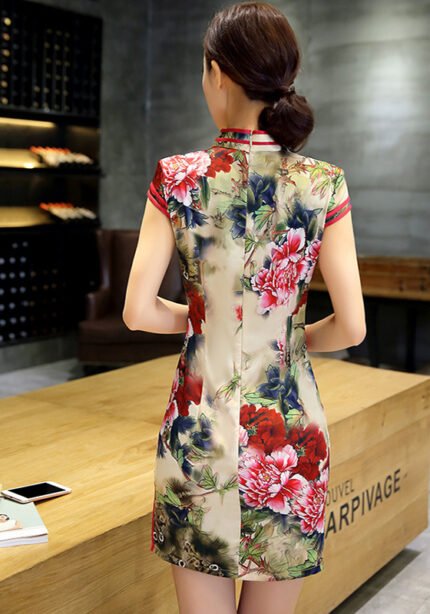Introduction to Modern Qipao(Cheongsam)
Modern cheongsam: Entering the era of three-dimensional styling, the waist is more fitted, the length of the cheongsam is greatly shortened, and the waist is also more fitted. Modern qipao is a simple and well-proportioned line structure that replaces fine handmade craftsmanship.
In recent years, the cheongsam, which has reappeared in fashion, has frequently appeared internationally and is regarded as a formal dress with ethnic representative significance in various international social etiquette occasions.
Features of modern qipao
The appearance characteristics of modern cheongsams generally require all or part of the following features: a right lapel with a wide open or semi-open front, a standing collar with a button, a side slit, a single piece of fabric, a cinched waist, sleeveless or short-sleeved design, etc. The slit is just one of the many features of cheongsam, not the only one, nor is it necessary.
Designer and Cheongsam
After evolving in the first half of the 20th century, the various basic characteristics and constituent elements of qipao gradually stabilized. Qipao has become a classic piece of women's clothing. Classics are relatively stable, while fashion is ever-changing. However, fashion designers often seek inspiration from classic designs, and qipao is also one of the sources of inspiration for designers.
Qipao is a traditional fashion for Chinese women that emerged in modern times, rather than a formal traditional ethnic costume. It has both a weathered past and a refreshed present. The qipao has a certain historical significance, and coupled with its high level of appreciation, it has a certain collection value. Although there are fewer women wearing cheongsams in modern times, many parts of cheongsams still maintain traditional charm while reflecting the beauty of fashion, so they also have certain collection value.
Production process
1. Crop
(1) Determine the front and back of the fabric - fold the front of the fabric inside, draw the powder line on the back, and do not use dark-colored powder on light-colored fabric;
(2) Determine the correct fold line of the fabric - as there is no seam in the center of the cheongsam, the fabric can be folded in half on one side during layout.
(3) Determine the direction of the fabric pattern, so that the pattern direction on the garment, sleeve, and collar is consistent;
(4) When cutting velvet fabric, pay attention to ensuring that the plush on each piece of clothing is aligned to avoid color differences;
(5) Appropriate seams and edges should be added to the contour line when cutting. If installing a regular zipper, the stopper needs to be 1.5cm, while for an invisible zipper, the stopper needs to be 1cm. The stopper for edging and embedding also varies.
(6) Check the quantity and quality of fabric and lining cut pieces. Like a right placket (with no wrong cutting on both sides)
2. Sewing
(1) Clothing piece extraction
(2) Side seam adhesive strip
(3) Collar edge tape tie
(4) Sewing
The difference between modern qipao and traditional qipao
There are differences between modern qipao dresses and traditional qipao dresses in terms of design elements, material selection, wearing style, and cultural connotations.
1. Different design elements
Traditional Qipao
The design is relatively traditional, using classic elements such as stand collar and pleats. The robe has a wide body, straight lines, and runs down to the feet in a straight tube shape. The collar, sleeves, collar, and skirt have wide lace. There are various types of lapels, including pipa lapels, diagonal lapels, etc., often equipped with rolled or trimmed decorations.
Modern cheongsam
In terms of design, more emphasis is placed on fashion sense and personalization, adopting a simple and fitting line structure. The skirt is looser than traditional qipao, with better comfort and mobility, suitable for modern women's busy daily wear. The height and position of the slit are also more diverse to meet the needs of different occasions and personalities.
2. Material selection
Traditional Qipao
Mainly made of natural materials such as silk, these materials are not only comfortable and breathable but also showcase a noble and elegant temperament.
Modern cheongsam
The material selection is more diversified, and materials such as lace, knitting, cotton, and linen are widely used in the production of modern cheongsams. These new materials not only enrich the texture of cheongsams but also make modern cheongsams more vibrant and fashionable in color.
3. Wearing style
Traditional Qipao
Special matching techniques are required, such as pairing high heels and wearing jewelry, necklaces, gloves, etc., to showcase its unique charm and temperament.
Modern cheongsam
Wearing styles are more flexible and diverse, and can be matched according to different occasions and personal preferences. For example, more casual shoes such as sports shoes, flat shoes, and flip-flops can be paired to meet the needs of different occasions.
4. Cultural connotation
Traditional Qipao
As an important component of traditional Chinese culture, traditional qipao carries rich historical and cultural connotations. It is a representative of Manchu women's clothing and an important treasure of Chinese national clothing culture.
Modern cheongsam
On the basis of retaining traditional charm, more emphasis is placed on fashion sense and personalized expression. It is the inheritor of traditional culture and the innovator of modern fashion culture. Through the integration and innovative design with modern elements, modern qipao showcases a more diverse and inclusive cultural connotation.
